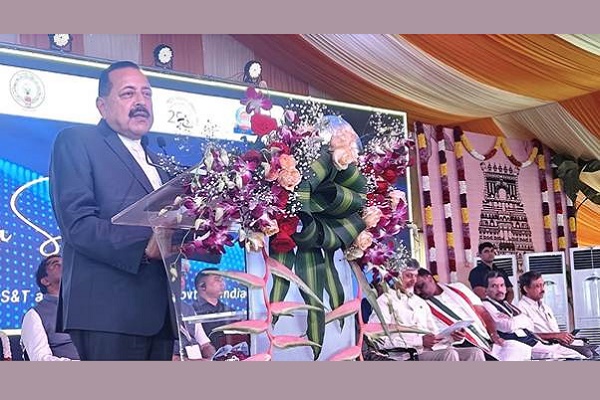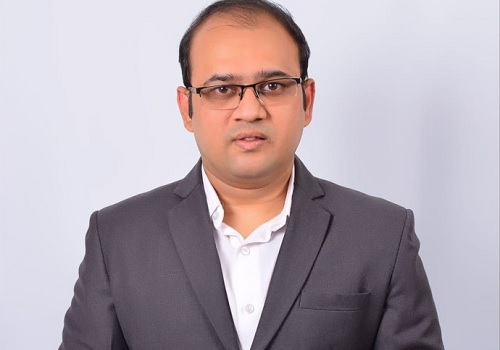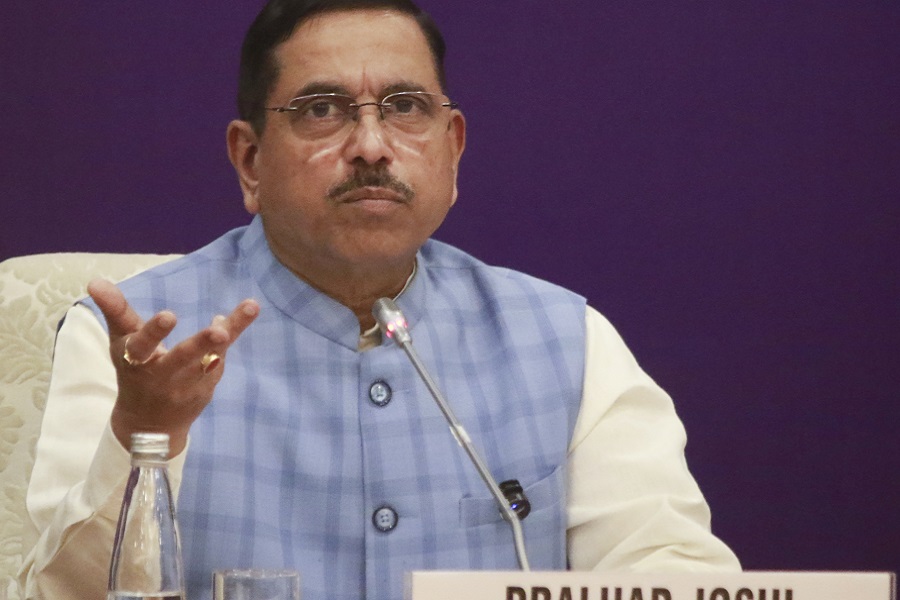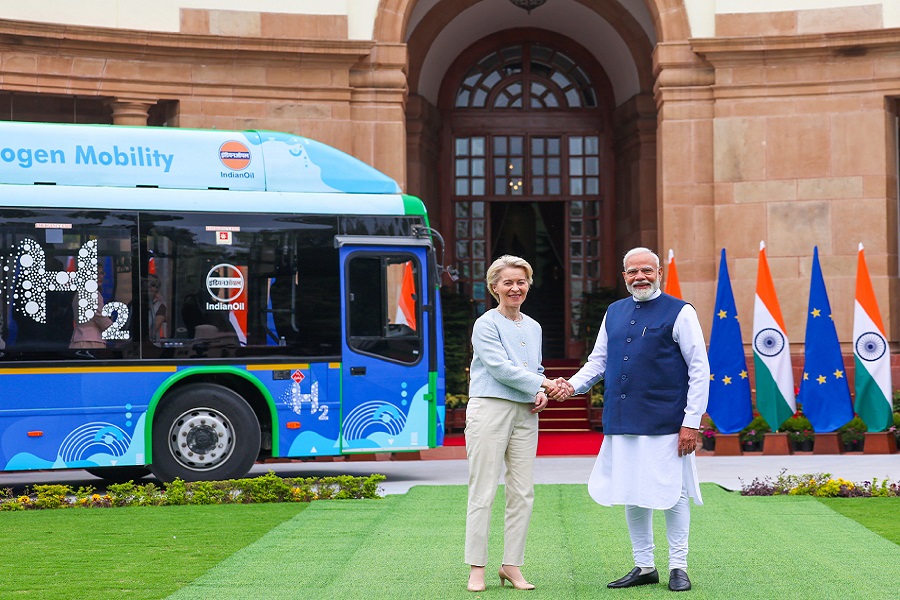Budget FY23: Preparing the ground for a virtuous circle of faster growth and lower deficits - ICICI Securities

* “Do No Harm” Budget was aimed at accelerating capex-led growth without rocking the boat, which is currently cruising along smoothly. The fiscal deficit is projected to be 6.9% of GDP this year and 6.4% of GDP in FY23. Given the strong revenue performance this year, we expect the final outcome to be a deficit of only 5.5% of GDP in FY22, providing a much better platform for FY23 as well.
* There were no significant changes to direct taxes, but the 15% corporate tax rate on new manufacturing units was extended to March 2024. The customs duties on products that are part of global value chains (GVCs) were either eliminated or cut sharply to encourage Indian participation in those GVCs. Capital goods for labourintensive industry will attract a 7.5% customs duty, but customs duties were cut for diamonds (used in the gems & jewellery export industry).
* Robust public investment will indeed crowd-in more private investment, setting off an investment-led and export-supported virtuous circle. We are raising our real GDP growth forecast for FY23 to 9%, with the near-total vaccination of the adult population reducing disruptions to the economy next year. The fiscal deficit in FY23 will likely shrink to 5% of GDP, and the consequently much lower-than-expected government borrowing requirement will spur the acceleration of private investment by allowing bond yields to remain lower than they otherwise would be amid rising policy rates.
Centrepiece of FY23 Budget is 35.4% increase in government’s capital expenditure, tilted towards rural and semi-urban areas. Finance Minister Nirmala Sitharaman delivered the shortest of her 4 Budget speeches, essentially maintaining last year’s focus on infrastructure and broader capital expenditure – with the goal being to “crowd-in” private investment. The FY22 (current fiscal year) Budget projected a 26% increase in capital expenditure, while the FY23 Budget postulates an even more ambitious 35.4% increase. The government’s emphasis is particularly towards boosting capital spending on rural and semi-urban areas (Tier-2 and 3 cities). Key initiatives here include the building of 8mn houses in FY23 for economically-weaker sections (EWS) across urban India (under PM Awas Yojana). This is credible, as 5.5mn have been completed so far, but 9.26mn have been ‘grounded’ out of 11.4mn sanctioned. Similarly, piped drinking water will reach another 38mn households in FY23.
The cornerstone of the infrastructure roll-out is the “Prime Minister’s Gati Shakti” Master Plan aimed at integrating expenditure on 7 infrastructure areas (roads, railways, airports, ports, mass transport, waterways and logistics) to emphasise synergies and connectivity among them (e.g., when building roads, to also lay fibre-optic cable, and ensure that rail stations and mass transit are connected rather than operating in silos). Around 100 new container terminals are to be built, and all post offices are to operate as banks to promote financial inclusion. The scheme to link 5 major rivers will make significant progress – helping to mitigate the risks from uneven rainfall, create permanent irrigation, hydropower, drinking water and river navigation. To alleviate the challenges school-children have faced amid the pandemic disruptions, 200 funded TV channels will impart educational content (classes 1-12) in all regional languages, and a digital university will be established to similarly create educational content.
Tech focus: 5G spectrum, accelerated transition to solar power, and defence import substitution. Technological initiatives will include rolling out fibre-optic cable to all villages by 2025, and auctioning 5G telecom spectrum in FY23 – with productionlinked incentives (PLI) being extended for design-linked manufacturing for 5G. A target of 280GW of solar power capacity by 2030 was set, and Rs195bn was allocated toward PLI for high-end solar module manufacturing. Incentives were rolled out for animation, visual-effects, gaming and comics (AVGC). The existing PLI schemes for 14 industries will continue, with Rs53bn for large scale electronics, Rs16.29bn for pharmaceuticals and Rs5.28bn for telecom & networking products. Import-substitution of defence procurement continues, with the domestic share in defence procurement slated to rise to 68% in FY23 from 58% this year. The domestic share of defence procurement was only 35% in FY2015, so import-substitution has progressed well in intervening years; if the FY23 target is met, India would be well ahead of the target (set in 2015) of achieving 70% indigenisation of defence purchases by 2027.
Long-delayed privatizations on auto-pilot. The big thrust on privatization announced last year (and a pipeline of deals built up since July 2019) has made key advances in the past 3 months. After Air India (privatised in October 2021, transferred this month), Odisha-based steelmaker NINL was privatised (on 31 January 2022) for an enterprise value of Rs121bn, likely implying cash payment of Rs55bn for a loss-making negativenet-worth company – albeit one with considerable synergies for the buyer. The gigantic IPO of LIC (Life Insurance Corporation of India) is likely to occur shortly. Oilrefiner/retailer BPCL will be a large transaction (giving the buyer a majority stake), albeit in a sector with a cloudy future beyond the current decade as electric vehicles (EV) challenge the primacy of petrol-driven cars. So policy initiatives and spending were also rolled out for the EV sector.
From the taxation standpoint, the Budget was a relative non-event, with no significant changes in direct taxes apart from a year’s extension (to March 2024) for the 15% concessional corporate tax rate for new manufacturing units, and a reduction in taxes for cooperative societies. In order to encourage India to become part of global value chains (GVCs), import duties on such products are cut or eliminated. China, Vietnam, Singapore, Malaysia and Thailand have massively bolstered their exports through participation in GVCs, where components are imported, some value is added through domestic processing/assembly, and the assembled products are then exported. Eliminating import duties on these products reduces the impediments to India’s participation in GVCs, and should eventually boost India’s net-exports. Customs duties on diamonds (part of India’s jewellery export sector) were also cut, but those on capital goods for labour-intensive industries (where India is competitive) were raised to 7.5% to encourage import substitution.
Virtuous circle of faster public investment, stronger revenues, lower deficits and bond yields crowding in more private investment. By December 2021, as much as 95.4% of FY22 tax receipts had already been collected, while only 70% of the projected total expenditure for FY22 had been spent, although capital expenditure was on track, rising 26% YoY. Consequently, the fiscal deficit for Apr-Dec 2021 (the first 9 months of FY22) was just 50.4% of the FY22 target. The January-March quarter is typically the strongest one for revenue, so the actual fiscal deficit for FY22 is likely to be much lower than the 6.9% of GDP mentioned in the Budget documents. We retain our forecast of this deficit being no higher than 5.5% of GDP in FY22. The huge 35% increase in public investment in FY23, at a time when 70% of all adults are fully vaccinated (likely exceeding 90% by the start of FY23), will allow an acceleration in real GDP growth to 9% in FY23. This will boost government revenue further in FY23, lowering the fiscal deficit to 5% of GDP, thereby restraining the rise in bond yields and contributing to a virtuous circle that crowds in more private investment.
To Read Complete Report & Disclaimer Click Here
For More ICICI Securities Disclaimer https://www.icicisecurities.com/AboutUs.aspx?About=7
Above views are of the author and not of the website kindly read disclaimer















